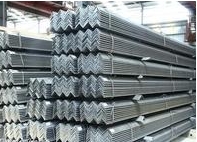 At the beginning of the founding of the People’s Republic of China, the steel industry made great contributions to China’s economic development. However, due to the slowdown in economic growth at home and abroad, overcapacity, and high financial costs, the steel industry has fallen into recession this year. The current situation of the iron and steel industry is analyzed.
At the beginning of the founding of the People’s Republic of China, the steel industry made great contributions to China’s economic development. However, due to the slowdown in economic growth at home and abroad, overcapacity, and high financial costs, the steel industry has fallen into recession this year. The current situation of the iron and steel industry is analyzed. The Ministry of Industry and Information Technology recently released "2012 Steel Industry Operation Analysis and 2013 Operational Outlook." In 2013, China's crude steel production is expected to be around 750 million tons, and the apparent consumption of crude steel is about 700 million tons, which is close to the peak demand area of ​​crude steel demand predicted by the “Twelve Five†Development Plan of Iron and Steel Industry (7.7 to 8.2). Billion tons), the growth of consumer demand for crude steel will tend to be stable.
1. The output of crude steel increased slightly and the regional development was not balanced. In 2012, China produced a total of 7,165,400 tons of crude steel, an increase of 3.1% over the same period of last year; it produced 657.91 million tons of iron, an increase of 3.7%; steel production (including duplicates) was 95.86 million tons, an increase of 7.7%, a year-on-year growth rate of 4.2, 4.7 respectively. And 2.2 percentage points. In terms of various regions, crude steel production in Xinjiang, Guizhou, Fujian, Jilin, Yunnan, and Guangxi increased by over 10%; crude steel production in Shanxi, Jiangsu, and Hebei provinces increased by 9.4%, 8%, and 6.2%, respectively. The average growth rate in the country; while Tianjin, Shanghai and other economically developed areas and Chongqing, Hunan and other provinces and cities with high productivity concentration fell more than 7%.
Second, the steady growth of net exports of steel products, iron ore prices recently rebounded quickly. In 2012, China exported 55.73 million tons of steel, an increase of 14%; imported steel 13.66 million tons, a decrease of 12.3%; imported billet 360,000 tons, a decrease of 43.3%; billets in total equivalent to net exports of 42.07 million tons of crude steel, year-on-year growth 26.3%, the growth rate was basically the same as last year. In 2012, China imported 743.55 million tons of iron ore, an increase of 8.4% year-on-year, and the average import price was US$128.6/ton, a year-on-year decrease of US$35.4/ton. The monthly average ore price began to rebound after falling to an annual low of US$104.9/ton in October, especially in the past one or more months. The ore price rebounded rapidly. By January 2013, the transaction price quickly rose to more than US$150/ton.
Third, the price of steel fell sharply and the price of long products dropped significantly. The level of steel prices in 2012 was generally lower than in the previous year. In particular, since mid-April, the market has experienced continuous and significant declines, and the price once fell to the level of 1994. By the end of December, the China Iron and Steel Association’s comprehensive steel price index was 105.3 points, down 15.2 points or 12.6% from the beginning of the year. From the product structure point of view, long products (rebar, wire, etc.) prices fell more than the plate (thin plate, plate, etc.), long-term "long strong plate weak" situation has changed. By the end of 2012, the average price of tertiary rebar nationwide was 3,808 yuan/ton, down by 672 yuan/ton from the same period of last year; the average price of 3.0mm hot rolled steel was 4,081 yuan/ton, down by 273 yuan/ton.
Fourth, the social inventory of steel products has continued to decline, and the pressure on the stockpiles of steel companies has soared. In 2012, the domestic steel social inventories showed a continuous declining trend, which fell from the previous month in February for consecutive 9 months. By the end of December, the country’s main steel market had a social inventory of 11.88 million tons, a decrease of 7.06 million tons from the highest point of the year, which was also the same period of last year. The reduction was 1.02 million tons. The continuous decline in steel society stocks has brought contradictions and pressures in the market to manufacturers. Steel stocks of steel companies have been at a high level last year. Among them, the record high reached 12.32 million tons in July. As of mid-November 2012, the stock of iron and steel enterprises was 10.64 million tons. The same period in 2011 increased by 6.1%.
V. The efficiency of enterprises has dropped sharply, and investment in fixed assets has dropped significantly. In 2012, 80 key large and medium-sized iron and steel enterprises realized a total sales income of 3.5441 trillion yuan, a year-on-year decrease of 4.3%; a profit of 1.58 billion yuan, a year-on-year decrease of 98.2%, and a sales margin of almost zero (only 0.04%). In 2012, the accumulated investment in fixed assets of the steel industry was 658.4 billion yuan, up 3% year-on-year, of which ferrous metal smelting and rolling processing industry investment was 50.5 billion yuan, down 2% year-on-year, and the growth rate had apparently dropped.
Animal Feed,Feed Additives, Poultry Feed
Feed Additives Co., Ltd. , http://www.nbanimalfeed.com